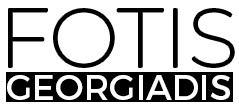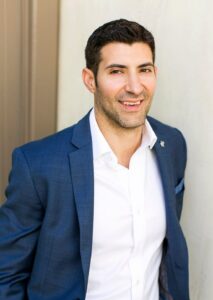Makers of The Metaverse: Sean DallasKidd Of Demonstrate On The Future Of The VR, AR & Mixed Reality Industries
Growth Mindset: Not only are the technologies changing quickly, so is the pace at which consumers adapt, hack and remix them. Being in the mix and consistently pushing yourself to learn and play with emerging tech is key in this space. You have to get in there and try — not stand back to “wait and see” or talk about it in the abstract. NFT’s are a good example here. The space felt overwhelming to me when I looked at it from a theoretical perspective. Once I took the step into the marketplace, it quickly started to make sense and I saw opportunities for brands that go beyond the artwork and also saw and began to understand the watchouts. One of the NFT projects that I’m involved with, Creative Factory, is looking to build a community for marketing and advertising professionals curious about the NFT space.
The Virtual Reality, Augmented Reality & Mixed Reality Industries are so exciting. What is coming around the corner? How will these improve our lives? What are the concerns we should keep an eye out for? Aside from entertainment, how can VR or AR help work or other parts of life? To address this, we had the pleasure of interviewing Sean DallasKidd.
Sean DallasKidd is a business savvy creative leader with over 15 years of experience helping brands define their story and how/ where to communicate it with their audience(s).His foundation comes from the world of publishing, which has helped to shape his approach to storytelling today. Sean believes that by defining a brand’s purpose, creating a more holistic, platform agnostic approach, will lead to deeper brand engagement and authentic actions that support the purpose. Sean is partner and chief creative at Demonstrate, an award-winning, boutique full-service marketing and communications agency and also the Director of Strategic Vision at REP CO, a storytelling collaborative that covers issues of racial and social justice.
Thank you so much for doing this with us! Before we dig in, our readers would like to get to know you a bit. Can you tell us a bit about your backstory and how you grew up?
Thank you for having me! I actually started my professional creative life making magazines. The publications I contributed to, crossed a wide range of niches. Everything from video games, fashion, technology to music and education. That was a fantastic foundation because as a designer, it firmly rooted me in understanding the importance of developing and protecting a strong editorial voice and value system. And this value system has helped to inform, filter and prioritize the kind of work I do, and my approach for creating successful marcom programs today.
Is there a particular book, film, or podcast that made a significant impact on you? Can you share a story or explain why it resonated with you so much?
I have always been an avid consumer of all forms of storytelling and the genres have ranged from the culinary to the exoplanetary and have not been beholden to past, present or future imaginings. That being said, Malcom Gladwell’s book The Tipping Point truly opened my eyes when it came to seeing and understanding how systemic change had been achieved historically. Tipping Point opened the door and led me down a path where I was introduced to the idea of design thinking, which in turn led me to spaces and conversations that involved topics like socioeconomics, nudge theory and more. At the time, you could say I was at an odd place to be as a designer, but now I think that having a growth mindset is table stakes in today’s ever evolving communications landscape.
Is there a particular story that inspired you to pursue a career in the X Reality industry? We’d love to hear it.
To be honest, my interest in the XR industry was, more than anything, a fight for relevance and survival as a young creative. The internet had made its way into pop culture, more people had mobile phones and although social media wasn’t fully “a thing” yet, I could see that there was extraordinary potential in these new platforms as they started to become adopted amongst pop culture. And so, as a young creative making magazines for a living, I could feel the tides shifting away from what I was doing and that if I didn’t move with the times, I’d find myself in trouble down the line. Luckily, I had the opportunity to help build a custom content division for my employer at the time. It was a big risk to leave my “cozy” job, for a group that was not defined or truly staffed with a skeleton crew (four including myself) when we started. But I took the leap and had the opportunity to develop websites, iPad apps, podcasts, etc. which opened the door to develop all other manner of XR experiences for many amazing brands.
Can you share the most interesting story that happened to you since you began this fascinating career?
I would have to say that developing the 19 Crimes App (now known as Living Wine Labels) is probably the most interesting story. It was not developed with the intention of going “viral” — the strategy was to develop a solution to help drive business impact for the sales team. We had two challenges to overcome as a small and relatively unknown brand at the time. First, we needed to arm the sales team with a compelling way to tell the brand story so that they could get retailers to buy in and get more facings on the shelf and floor. Second, we needed a way to work around the clean store policies that grocers were pursuing as they looked to modernize and premiumize stores. We looked towards technology. Each 19 Crimes label featured a mugshot of an individual banished to Australia for committing one of the 19 crimes. Augmented Reality (AR) gave us the opportunity to bring these stories to life in a very new and exciting way. It opened the door for creating a little retail theater and was a much more exciting way to introduce the brand to a store buyer than a well designed layout slotted in with a binder full of other brands. The AR platform also allowed us to work out the brand architecture, narrative and once in the hands of consumers create the opportunity to build onto the platform and drive conversation on social — a stretch goal. At the time, I had no idea that it would take off the way it did but it goes to show that having a clear brand purpose affords you rich creative territories to drive culturally relevant brand actions.
Can you share a story about the funniest mistake you made when you were first starting? Can you tell us what lesson you learned from that?
Mistake!?! I never make those lol. Seriously though… there is one “funny” moment that comes to mind. It happened back when I was an Art Director for a video game magazine. We had an exclusive for a military inspired FPS game title that had fans chomping at the bit for any new information. So we went all-in creatively and created a rich, multi-page feature story that went in depth on the game. At the last minute, like right before going to press, we found out that the story needed to be pulled. Obviously we didn’t have enough time to develop a new feature or set of stories to replace it — so… we decided to redact the entire story, all of it. We noted the pivot in the editorial and teased a reveal of the redacted content in an upcoming issue and waited to hear the response. The good news was that we did not get hammered by our readers — in fact we got positive feedback to our approach. The learning that I got from that experience was that if a brand stays true to its voice, it’ll attract people who “get it” and become loyal fans which in turn creates the opportunity for nimbleness and experimentation.
None of us are able to achieve success without some help along the way. Is there a particular person who you are grateful towards who helped get you to where you are? Can you share a story about that?
Success is definitely a team effort. There is no way that I could have made it where I am without the network of supporters and co-conspirators I have met over the years. I believe in putting the kind of energy out into the world that you want to receive from the world. Something I learned from my mother. And so far it has worked well. I know that I am at my best when my environment is inhabited by diverse, creative, passionate and hard working people. So that is the energy I put out into the world. And in turn, I think, I attract people who resonate with that kind of energy.
Are you working on any exciting new projects now? How do you think that will help people?
I like to stay making and getting weird, so there are a few projects in the works that I am excited about. I would say the common theme and approach for a majority of the projects we are
working through right now are initiatives that support and highlight folks that are underrepresented or fighting to enact change in the world. And as a matter of course, we strive to collaborate with diverse talent, creatives and client partners across any programs we develop — so you can say we try our best to help people wherever possible.
The VR, AR and MR industries seem so exciting right now. What are the 3 things in particular that most excite you about the industry?
There is certainly a lot of energy in this space right now! When it comes to Virtual Reality, I am extremely excited about the new immersive realities that are being built now. As someone who started in the gaming space, obviously I’m curious to see what kind of worlds we’ll get to explore and how these emerging communities will connect and reimagine in this new space. What excites me about Augmented Reality is the role it can play in education. Assuming that we can scale the technology down in a way that it is accessible globally, there are some fantastic applications in terms of closing that opportunity gap for folks typically overlooked. Not to mention the fact that technology and software is always evolving, so being able to marry AR and AI can result in all of us staying up-to-date with the latest advancements. Finally MR is a space that has just scratched the surface in my opinion. I think that it can unlock an entirely new level of efficiency and inspiration when applied to things like logistics, infrastructure and designing fluid spaces. Overall, XR has the potential to open up an entirely new ecosystem of deeply immersive experiences, businesses and opportunity globally, if approached with care.
What are the 3 things that concern you about the VR, AR and MR industries? Can you explain? What can be done to address those concerns?
As compelling and interesting as this space is, it runs the risk of losing any mass cultural stickiness because the industry is lacking when it comes to diversity, inclusivity and equity. It is my belief that we need diverse perspectives that push for inclusivity when developing the hardware and software that will underpin this new ecosystem.
A simple, but recent example happened to me a few weeks back, when I visited an AR/NFT exhibit here in San Francisco I typically wear my hair up; however, the hardware product used, premium pricing for the full experience, was such that I had to take my hair down in order to wear the headset. So in my mind, that hardware would be a no-go for any experience I were to develop. I would not want to put my brand or client partner in the position of alienating guests who may not have short, cropped or flat hair.
When I say Equity, I am speaking specifically to program bias. We have seen that AI can not only be racist but also agist. When you run the risk of disenfranchising all of those people (most of the audience pie) you are also throwing cultural relevance and mass adoption out the window along with any associated revenue. What you are left with is a space that has importance to a few early adopters and little to no social currency or value at scale — a flex with no muscle. 🦾
I think the entertainment aspects of VR, AR and MR are apparent. Can you share with our readers how these industries can help us at work?
When I think about how XR can be applied at work, it feels like the opportunities are endless. Some of the more obvious applications are in the engineering and product design space. Having the ability to educate and empower technicians on the field in real-time is powerful, to say the least. When I think about applying these tools in my work, one area that really stands out is how this technology can be applied to the concept development of event experiences and activations. Having the ability to virtually “walk through” an activation before it happens IRL would not only help to drive buy-in brand side, but also identify additional opportunities to make the event more more engaging.
Are there other ways that VR, AR and MR can improve our lives? Can you explain?
As a human, I think XR can truly benefit the world and help to improve the quality of life globally — again, this assumes it scales in an equitable way. Applying this technology across spaces like telehealth, the supply chain, environmental issues and infrastructure; I believe will build more human connection and empathy globally.
What are the “myths” that you would like to dispel about working in your industry? Can you explain what you mean?
One of the myths that orbits the creative community is the perception that we lack business acumen. The truth is that brands and governments have long looked to creatives to fix their business problems — we just tackle the issues from a different angle: culture. I don’t intend to take anything away from the folks traditionally seen and placed as the corporate or institutional leads but being culturally relevant also drives business success. It doesn’t matter how good you can build or manipulate a spreadsheet. If nobody cares, nobody buys.
What are your “5 Things You Need To Create A Highly Successful Career In The VR, AR or MR Industries?”
- Growth Mindset: Not only are the technologies changing quickly, so is the pace at which consumers adapt, hack and remix them. Being in the mix and consistently pushing yourself to learn and play with emerging tech is key in this space. You have to get in there and try — not stand back to “wait and see” or talk about it in the abstract. NFT’s are a good example here. The space felt overwhelming to me when I looked at it from a theoretical perspective. Once I took the step into the marketplace, it quickly started to make sense and I saw opportunities for brands that go beyond the artwork and also saw and began to understand the watchouts. One of the NFT projects that I’m involved with, Creative Factory, is looking to build a community for marketing and advertising professionals curious about the NFT space.
- Comfort in Chaos: I have a saying “get comfortable being uncomfortable.” For me, where there is great upheaval there is great opportunity and the XR sector is no exception. One has to realize that the initial onboarding phase may be mentally taxing at first but once you know enough to be dangerous, you inevitably start to identify opportunities that others aren’t thinking about. A good example here was our work with F’real and the development of the ShakeRun game. We were looking at ways to provide some surprise and delight to customers while they waited for their milkshake to blend. We took advantage of the digital display at the point of sale, and leveraged QR code technology to drive customers to the app. This not only excited retail partners, but became fodder that drove social engagement and extended brand exposure and engagement well beyond the lifespan of consuming the milkshake.
- Collaborative Spirit: XR sits in a very interesting intersectionality. In order to do something that drives business objectives, you not only need to have earned the trust of your client partner but you need to trust your technology partner while balancing the brand narrative and communication objectives in a way that can drive talkability amongst your target audiences. Adding onto that, you may look at opportunities to co-create, with influencers and/or the brand community. Having an open mind and dealing in trust is key here. The Living Wine Labels AR app was a good example of that. Being first to market took a lot of trust for all parties involved. We had a great team and partnership that truly drove innovation and business impact in the short-term and has sustained in the years since its initial launch.
- Aggressively Inclusive: As I said before, we know that AI can be racist and ageist. And that tech and products can exclude vast swaths of the population. We have seen companies create products that look to bridge that gap, for example Degree’s adaptive deodorant and the Xbox adaptive controller, both of which are fabulous and a HUGE shout out to the teams that brought these products and others to the world! But one has to ask themselves why do we have “adaptive” products in the first place — especially considering the amount of investment that goes into these categories? The issue has to do with who is at the table. These solutions, as wonderful as they are, are a symptom of the problem, a lack of inclusivity — so those considerations weren’t baked into the product from the outset or the choice was made that those groups weren’t worth the investment.
- Release Assumptions: I think one of the things that sets my agency Demonstrate apart is the fact that we often tell potential partners that we can’t tell you what the final output or tactic will be. As a full service, integrated agency partner we do our best work when we start with the business objective. The solution may manifest itself across all or one of the communication channels, be it: paid, earned, shared, owned. As a result, we have developed solutions that range from influencer co-creation programs, made cartoons, apps, websites, games, TV ads, shopper programs and more. And our target consumers have ranged from GenZ audiences to Ultra High Net Worth individuals and everyone in between. Fortunately this approach has resonated with our brand partners and driven outsized impact for their respective brands, not to mention their bottom lines.
You are a person of great influence. If you could inspire a movement that would bring the most amount of good to the most amount of people, what would that be?
Thank you for the compliment, but that is a BIG question! If I could inspire any kind of movement, it would be one focused on empathy. Empathy for others, empathy for the earth and empathy for ones’ self. If we could make our way through this empathy drought plaguing society, I feel like the world will be better off for all humans. It’s hard to do, but you have to try and leave your assumptions at the door. Entering conversations, debates and content with an open mind and heart is essential if we hope to take a step forward as a society. I feel that is the only way we can get past what people are saying and begin to understand why they are saying it, so that we can start to fix these challenges together — by attacking the root causes, not the symptoms.
Thank you for these fantastic insights. We greatly appreciate the time you spent on this.
Makers of The Metaverse: Sean DallasKidd Of Demonstrate On The Future Of The VR, AR & Mixed Reality… was originally published in Authority Magazine on Medium, where people are continuing the conversation by highlighting and responding to this story.



